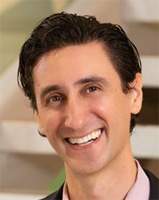No CMOs Or CROs: A Unique Approach To Cell Therapy Development

By Ed Miseta, Chief Editor, Clinical Leader

Cartesian Therapeutics is a clinical stage biotechnology company headquartered in Gaithersburg, MD. Although it has just 20 employees, the company performs all its preclinical and regulatory work and clinical operations in-house. A few years ago, Cartesian also built a GMP manufacturing facility from the ground up. That gives the company its own quality management system and quality control labs. In doing so, Murat Kalayoglu, M.D., Ph.D., Cartesian’s president and CEO, notes the company can move assets into the clinic relatively quickly. Currently there are three assets, all RNA-modified cell therapies, in clinical trials in three different therapeutic areas.
“Our areas of focus are auto-immune disease, respiratory disease, and cancer,” says Kalayoglu. “In oncology, unlike many other cell therapies that are focused on advanced relapsed/refractory cancers, we tend to focus our efforts on patients that are newly diagnosed. The reason that we're able to do that is because of a really fundamental, philosophical difference that we have relative to all the other cell therapies. I believe around 98% of companies alter the cell at the DNA level, which results in permanent changes. Doing so will cause the cell to proliferate in the body when it encounters a target. What often ends up happening is the cell doesn't know when to stop proliferating.”
With a typical CAR-T treatment, there is cytokine release syndrome, neurotoxicity, and the risk of infections. There is also a long-term risk of the cell turning into a cancerous cell, or the risk of immunogenicity activating a new response in the body.
A Different Approach

Cartesian has taken its philosophy and formalized it into a platform technology called the RNA Armory℠. The vision behind Armory is to RNA engineer any cell to deliver a combination of therapies to any part of the body. The cell will be used as the factory for producing as well as the vehicle for delivering the therapy or multiple therapeutics. If you're engineering three different RNAs into a cell, you can have two of them enhance the potency of the first RNA therapeutic, or you can engineer different RNAs that target a given disease at multiple levels at multiple mechanisms of action.
Cartesian has three assets in clinical development. One is the first RNA engineered cell therapy in an autoimmune disease, targeting Myasthenia Gravis. The second is the first RNA engineered cell therapy in frontline cancer, targeting multiple myeloma. The third is the first RNA engineered cell therapy (Descartes-30) in acute respiratory distress syndrome, including but not limited to COVID-19.
Concerns Over Capacity
Not every small company opts to go out and build its own GMP manufacturing facility. But for Cartesian, capacity was an overriding factor in the decision-making process.
“In the cell therapy space, it can take forever to get a program up and running at a CMO,” says Kalayoglu. “It can take more than a year. Even if you’re using a conventional method of engineering cells, it can take 18 months to get a slot and another 6 to 9 months for all the process development. That will dramatically slow your ability to test a hypothesis.”
Still, the time it takes to get the manufacturing scheduled and completed is not the biggest reason Cartesian chose to pursue its own facility. Kalayoglu points to the difficulty of learning the iterative optimization of the process. When contracting out to a third party, those employees might be working on several different projects.
“They are working on different projects and are answering to different people,” he says. “Being an outside organization, they may also not be as incentivized and motivated to get your project up and running. The folks manufacturing your product may also not be the most senior people at the firm. Those are all issues we were hoping to avoid.”
The Cartesian team is one that Kalayoglu is proud of. He notes they are all appropriately trained and most of the team either has an M.D. or a Ph.D. The team manufacturing the product has a high level of expertise in assimilating the nuanced differences between the steps and will ask the right questions to ensure processes are optimized with each manufacturing run, something he states is important with both allogeneic and autologous products.
A Lot To Learn
In cell therapy manufacturing, there is still a lot to learn. Kalayoglu notes the similarities to the first five years of development when monoclonal antibodies first appeared. “We didn't really know what we were doing as a field,” he states. “That is where we are now with cell therapies. That is even more true when you are pioneering a new class of products at the intersection of RNA and cell therapies. There is conventional RNA therapeutics and conventional DNA-based cell therapies. We are taking the best of both worlds and creating a new class of product that has not been done before. For that reason, it is important to us to take full control over that process. We can extract as much information as possible to build a platform that's capable of working with a whole array of different cells, both autologous cells and off the shelf therapies, and be able to manufacture tens of billions of cells in a given production line.”
The company’s desire to learn and perform its own work means it is also not outsourcing work to CRO partners.
“Our entire clinical team is also a group of talented medical doctors who all work in-house,” says Kalayoglu. “We do our best to engage with each site at a level that is equal to or greater than what you might expect from a typical CRO. As we continue our expansion into these different disease areas, we will continually search for best-in-class CROs that have specific emphasis and experience working in those diseases. I believe we are good generalists, but we know there are folks out there that have built up their experience over many years. We will not discount that experience and we are in constant talks with potential partners that can help us in the future.”
Moving Cell Therapies Beyond Oncology
Up until now, cell therapies have been focused on treatments for oncology patients. One challenge Cartesian will face moving forward will involve the development of treatments outside the oncology space, where physicians have very little familiarity with the use of cell therapies to treat patients.
“When you have a new way of administering a therapy to a given indication, there will be a degree of trepidation when introducing the concept to a clinical site,” states Kalayoglu. “The physicians and staff have not had as much experience working with cell therapy treatments. Typical treatments tend to be a small molecule or a biologic in which the administration of the treatment is straightforward. These medicines follow a typical treatment paradigm whereas a cell therapy is much more complicated to administer.”
Just from an operational standpoint, cell therapies are shipped frozen and must be stored at very low temperatures. They also must be thawed and administered a certain way. Even in larger universities that have cell therapy departments, they are not housed within the division of neurology or rheumatology. Often, they are in the oncology realm.
“That creates the need for a lot of communication,” notes Kalayoglu. “We have to introduce the cell therapy concept to sites and physicians. We discuss the handling and administration procedures in detail. There is a good amount of handholding that must occur as well. Even in large universities we must educate them on the best practices we have learned over the years. The process can be very slow.”
The second challenge involves risk. The toxicities of conventional CAR-T cells have relegated their use to advanced cancers. So clinical trial sites worried about treating patients with CAR-T treatments who do not have the most advanced cancers. While hematologists and oncologists are often used to seeing the toxicities associated with conventional cell therapies, a neurologist would not and may be hesitant to use them. Cartesian provides those physicians with substantial amounts of safety data generated over the years. The data shows no cytokine release syndrome, no neurotoxicity, and no increased risk of infections.
“Those conversations take time,” adds Kalayoglu. “The intersection of RNA and cell therapy is unique in terms of the potential for efficacy. We will take things one step at a time and do our best to educate everyone on the benefits it has to transform the lives of patients.”
